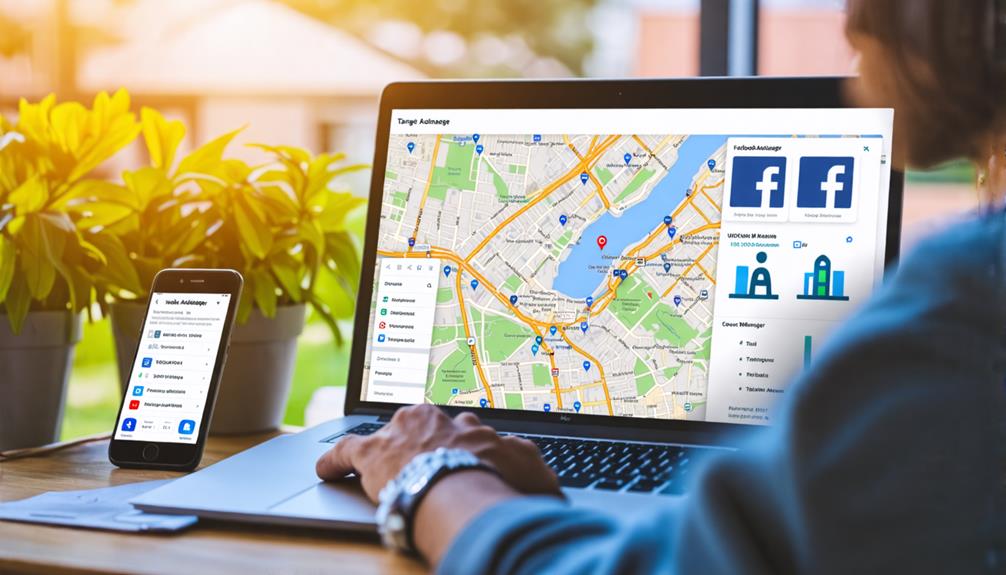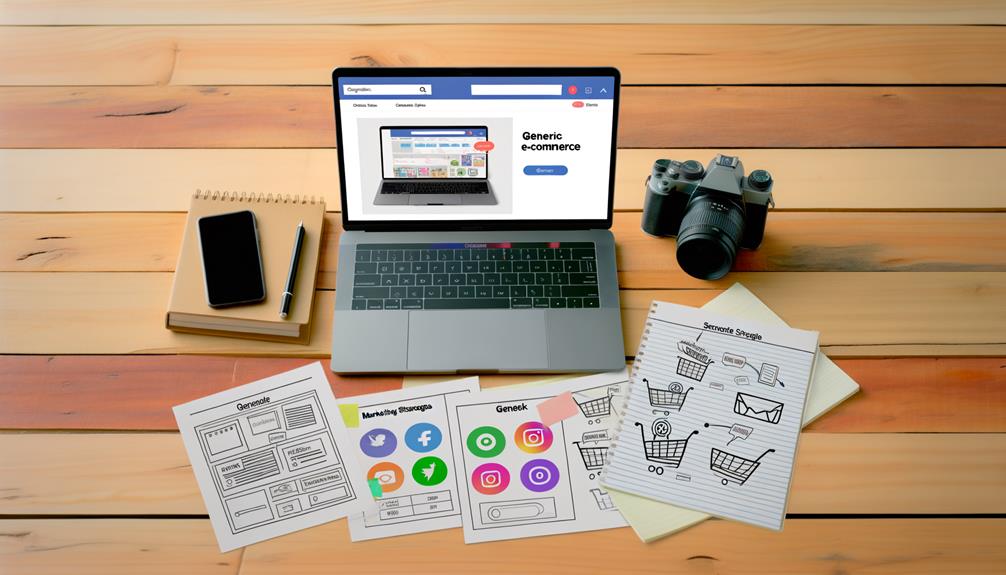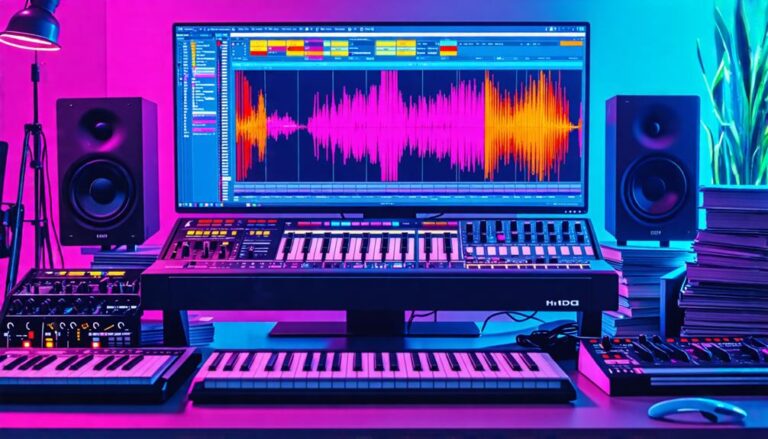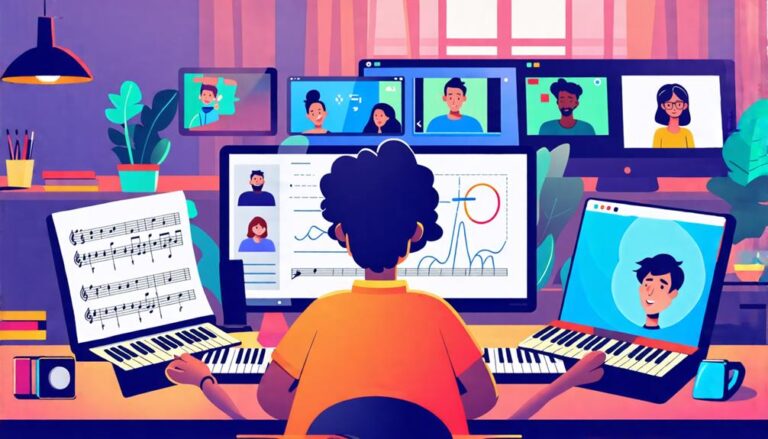How to Offer Drum Lessons for Beginners
Are you ready to turn your drumming skills into a profitable side hustle? Offering drum lessons for beginners can be a rewarding way to share your passion while earning extra income. Here's a step-by-step guide to help you get started and make your drum teaching business a success.
1. Assess Your Readiness:
Before diving in, evaluate whether you're prepared to take your passion to the next level. Teaching requires patience, clear communication, and a structured approach. Ensure you have the dedication and enthusiasm to guide beginners on their musical journey.
2. Set Up a Dedicated Teaching Space:
Create a comfortable and distraction-free environment for your lessons. This can be a room in your home, a rented studio, or even an online setup for virtual lessons. Make sure the space is equipped with a drum kit, sticks, and other necessary accessories.
3. Develop Structured Lesson Plans:
Plan your lessons to cater to beginners. Start with the basics, such as proper posture, holding drumsticks, and simple rhythms. Gradually introduce more complex techniques as your students progress. Having a clear curriculum will help keep your lessons organized and effective.
4. Market Your Services:
Effective marketing is key to attracting students. Utilize social media platforms, create a professional website, and join local community groups to spread the word. Offering a free trial lesson or a discount for the first few sessions can also entice potential students to give your lessons a try.
5. Set Competitive Pricing:
Research the going rates for drum lessons in your area and set your prices accordingly. Consider offering different packages, such as individual lessons, group sessions, or monthly subscriptions. Transparent pricing will help you attract and retain students.
6. Foster Relationships with Your Students:
Building a rapport with your students is crucial for long-term success. Be encouraging, patient, and responsive to their needs. Regularly seek feedback to improve your teaching methods and keep your students motivated.
By following these steps, you can transform your drumming skills into a thriving side hustle. Not only will you generate extra income, but you'll also have the satisfaction of nurturing the musical talents of aspiring drummers.
So, are you ready to drum up your entrepreneurial spirit and start your journey as a drum instructor?
Benefits of Teaching Drum Beginners
Teaching drum beginners as a side hustle offers numerous benefits beyond just extra income.
You'll foster their musical growth while cultivating a sense of accomplishment and confidence that can positively impact their overall well-being.
As a side hustle, this endeavor allows you to witness firsthand the excitement of seeing a student grasp a new concept or master a challenging technique.
Tracking student progress, no matter how small, becomes incredibly fulfilling, and your students' successes serve as a powerful motivator for you.
In this side gig, you'll also refine your teaching techniques and develop a unique approach to address the diverse needs of your students.
This process not only makes you a more effective educator but also a more skilled drummer.
Teaching beginners forces you to re-examine the fundamentals of drumming and distill complex concepts into bite-sized, digestible pieces, enriching your own understanding of the instrument.
Setting Up Your Drum Studio
To establish an effective side hustle, transforming a dedicated area into a well-equipped drum studio is essential. A well-designed studio inspires creativity and minimizes distractions, making it an inviting space for students.
Consider a layout that allows for easy movement and clear visibility, positioning your drum set and teaching tools to promote efficient lessons and free movement.
Additionally, incorporate soundproofing techniques to prevent noise from escaping or entering the studio. This may include installing acoustic panels, sealing gaps and cracks, and using soundproofing materials on walls, ceilings, and floors.
A well-designed drum studio not only enhances the learning experience but also helps maintain a positive relationship with your neighbors and household members, making it a sustainable and enjoyable side hustle.
Creating a Lesson Plan Structure
Now that you've set up your drum studio as a side hustle, you're ready to create an effective lesson plan structure for your students.
To get started, you'll set clear goals and objectives that cater to each student's needs and skill level.
Setting Goals and Objectives
As you begin your side hustle, setting specific, achievable goals and objectives will help you create a structured plan tailored to your needs and pace.
By defining clear goals, you'll be able to track your progress, identify areas for improvement, and make adjustments to your plan as needed. Effective goal tracking and objective measurement are essential to ensuring you stay on track and achieve your desired outcomes.
Here are some key considerations to keep in mind when setting your goals and objectives:
- Develop specific, measurable objectives: Clearly define what you want to achieve in your side hustle, and establish metrics to measure your progress.
- Prioritize your goals: Focus on the most important objectives first, and allocate your time and resources accordingly.
Building a Lesson Template
With clear goals and objectives in place, building a lesson template becomes the next essential step in creating an effective and engaging drum lessons program as a side hustle. This approach allows you to organize your teaching ideas, streamline your workflow, and deliver high-quality instruction to your students, all while managing your primary commitments.
By creating a standardized template, you'll be able to customize lessons for each student while maintaining a structured approach that fits into your busy schedule. This template will serve as a guide, helping you stay on track and guarantee that your students meet their learning objectives.
When building your template, consider the key elements that promote student engagement and lesson customization. Include sections for warm-ups, technical exercises, and song playing, as well as space for notes and feedback.
This will enable you to tailor your instruction to each student's needs and abilities, fostering a supportive and motivating learning environment. By investing time in developing a thorough lesson template, you'll be able to provide a high-quality learning experience for your students, setting them up for success and keeping them engaged and motivated, all while effectively managing your side hustle.
Essential Equipment for Drum Lessons
Whether you're exploring drumming as a side hustle or expanding your skills in a studio setting, having the right equipment from the start will help you establish good technique and make progress faster. If you're offering drum lessons as a side gig, guiding your students in selecting the right gear can make all the difference. Here are the essentials:
- A good pair of drumsticks: Choosing the right drumsticks can be overwhelming, but you'll want to pick a pair that feels comfortable in your hand and suits your playing style. As a beginner, a 5A or 5B stick is a great starting point.
- A practice pad: Practice pads are a fantastic way to practice basic strokes, work on technique, and build strength without making too much noise. They come in various sizes, so choose one that fits your space.
Investing in these essential pieces of equipment will help you and your students develop good technique, improve sound quality, and enhance the overall learning experience.
Marketing Your Drum Lessons Service
Developing a strong marketing strategy is essential to attracting students and turning your drum lessons side hustle into a successful and profitable venture. You'll want to reach potential students in your community, highlighting your expertise and the benefits of your lessons.
One effective way to do this is through social media. Create a business page on platforms like Facebook, Instagram, and Twitter, and post regular updates, including tips, promotions, and testimonials from satisfied students. Use relevant hashtags to expand your reach.
In addition to social media, consider forming local partnerships to grow your side hustle. Reach out to local music stores, schools, and community centers, and ask if they'd be willing to distribute your flyers or promote your services to their customers or students.
You can also offer free trial lessons or group classes at these locations to give potential students a taste of your teaching style. By getting your name out there and showcasing your expertise, you'll attract more students and build a loyal customer base.
With a solid marketing strategy, you'll be well on your way to building a successful drum lessons side hustle.
Finding and Retaining Students Online
As you build your online presence as a drum teacher, you'll want to focus on creating a professional website and engaging social media profiles that showcase your expertise and teaching style.
By doing so, you'll be able to effectively advertise your side hustle to potential students and attract new clients.
In this section, you'll learn how to develop a thorough online strategy that helps you find and retain students online, setting your drum lessons side hustle up for long-term success.
Building Online Presence
Your online presence is crucial for attracting and retaining drum students as a side hustle, so focus on building a professional website and leveraging social media platforms to showcase your teaching style and expertise. A well-designed website will establish credibility and serve as a central hub for prospective students to learn about your services. Social media platforms, meanwhile, offer powerful tools for content creation and community engagement.
To get started, consider the following:
- Develop a content strategy: Share tips, tutorials, and behind-the-scenes insights into your teaching approach to demonstrate your expertise and build trust with potential students.
- Utilize video content: Showcase your drumming skills and teaching style through high-quality video lessons and tutorials.
Effective Advertising Strategies
To maximize your online visibility and attract potential drum students for your side hustle, you'll need to implement a targeted advertising strategy that reaches the right people at the right time.
Start by leveraging social media platforms, such as Facebook, Instagram, and YouTube, to showcase your drumming skills and share engaging content. Create short video clips, offer free lessons, and provide valuable tips to establish your authority and build trust with your audience.
Next, explore local partnerships to reach a broader audience. Partner with local music stores, schools, and community centers to post flyers, distribute business cards, or even offer joint promotions. This will help you tap into their existing customer base and generate referrals.
Consider running targeted online ads, such as Google Ads or Facebook Ads, to reach people actively searching for drum lessons in your area. By allocating a small budget to these platforms, you'll increase your online visibility, drive traffic to your website, and attract new students.
Monitor your ad performance, adjust your strategy, and optimize your ads for better results.
Setting Rates and Payment Terms
Determining fair and competitive rates for your drum lessons as a side hustle is essential to attracting and retaining students while ensuring you earn a decent income. To set the right rates, you'll need to conduct a competitive analysis, researching what other drum instructors in your area are charging. You'll also want to consider your own costs, such as equipment, marketing expenses, and the value you bring to your students.
Here are some key factors to think about when setting your rates:
- *Your target audience*: Are you teaching beginners, intermediate, or advanced students? Each level may require different pricing.
- *Lesson format*: Will you offer private or group lessons? Group lessons may be more affordable for students, but you'll need to ensure you're earning enough.
Building a Professional Online Presence
Developing a strong online presence is crucial for attracting potential drum students and expanding your side hustle. It all begins with crafting a website that effectively highlights your teaching credentials, services, and unique selling proposition. Your website will serve as the cornerstone of your online presence, so it's essential to get it right. Here's a breakdown of the key elements to include:
| Website Element | Description |
|---|---|
| Homepage | Introduce yourself, highlight your teaching experience, and clearly state your services |
| About Page | Share your story, qualifications, and teaching philosophy |
| Services Page | Outline your lesson offerings, including formats (in-person, online) and levels (beginner, intermediate) |
| Testimonials Page | Showcase feedback and reviews from satisfied students |
| Contact Page | Provide a contact form, email address, and social media links |
Conclusion
As you start offering drum lessons for beginners, you'll be sharing your passion for music while building a sense of community and nurturing the next generation of musicians.
With a well-structured approach, this side hustle can become both fulfilling and lucrative.
Embracing the challenges and rewards of teaching will refine your craft and leave a lasting impact on your students' musical journeys.

















































0
View comments